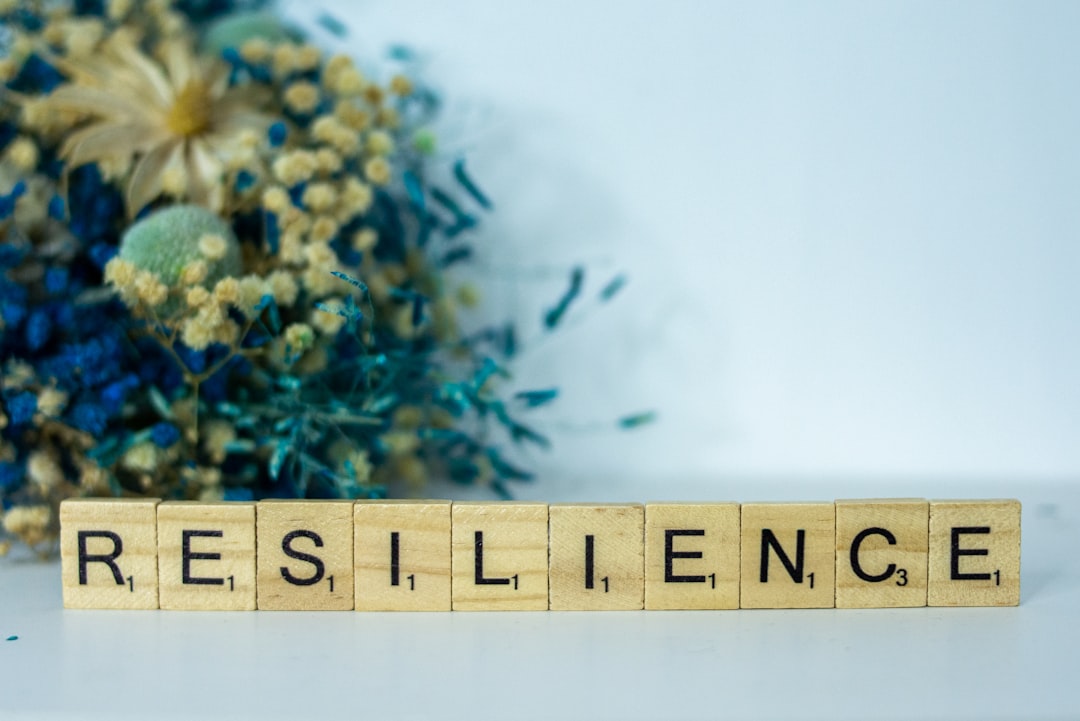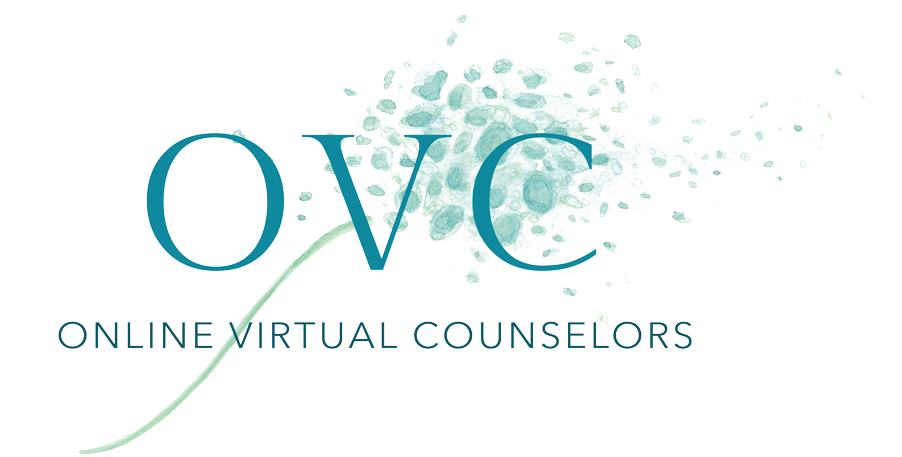Discuss various traumatic events that can lead to PTSD, such as military combat, personal assaults, accidents, natural disasters, or witnessing horrific events.
1. Introduction: Shedding Light on the Different Faces of Trauma
Trauma is a deeply personal experience that can manifest in various ways. It is not limited to a single event or definition, but rather encompasses a broad spectrum of experiences and reactions. While trauma can have a profound and lasting impact on a person’s life, it is important to recognize that healing and resilience are possible. By understanding the different faces of trauma, we can better support and uplift those who have experienced it and work towards creating a more compassionate and empathetic society. In this blog, we will explore the multifaceted nature of trauma and highlight the importance of hope, growth, and healing.

https://unsplash.com/@pedrosanz
2. The Brave Warriors: Understanding PTSD from Military Combat Experiences
The term PTSD, or Post-Traumatic Stress Disorder, is often associated with military combat experiences. This section will shed light on the unique challenges faced by veterans and active-duty military personnel who have experienced trauma during their service.
Military combat experiences expose individuals to extreme and life-threatening situations, resulting in a heightened risk of developing PTSD. The constant exposure to violence, loss, and the fear of death or injury can have a lasting impact on a soldier’s mental and emotional well-being.
PTSD in military veterans is characterized by recurring intrusive memories, nightmares, flashbacks, and severe emotional distress associated with the traumatic event. Additionally, veterans may experience hyperarousal symptoms, such as hypervigilance, difficulty sleeping, and exaggerated startle response.
It is important to note that not all individuals who experience combat will develop PTSD. Factors such as pre-existing mental health conditions, resilience, and support systems can play a role in an individual’s ability to cope with trauma.
Furthermore, it is essential to understand that PTSD is not a sign of weakness or personal failure. It is a natural response to an abnormal and traumatic situation. Veterans who experience PTSD should not hesitate to seek help and support.
Treatment for PTSD in military personnel often involves a combination of therapeutic approaches, such as cognitive-behavioral therapy (CBT), eye movement desensitization and reprocessing (EMDR), and medication. These approaches aim to address the underlying trauma, manage symptoms, and promote healing and resilience.
Support systems play a crucial role in assisting veterans with PTSD. Peer support groups, counseling services provided by the Department of Veterans Affairs, and community programs can provide a safe and understanding environment for veterans to share their experiences and support each other’s recovery journey.
It is also essential to raise awareness and reduce the stigma surrounding mental health in the military. Educating the public, as well as military personnel and their families, about PTSD and its effects can promote understanding, compassion, and appropriate support.
By acknowledging the unique challenges faced by military personnel who have experienced trauma, society can work towards creating a more supportive and compassionate environment for our brave warriors. It is crucial to honor their service and provide them with the resources they need to heal and thrive.

https://unsplash.com/@karim_manjra
3. Beyond the Shadows: Unveiling the Impact of Personal Assault Trauma
Personal assault trauma refers to experiences of physical, sexual, or emotional violence inflicted by another person. It is a deeply distressing and traumatic event that can have long-lasting effects on a person’s mental and emotional well-being. In this section, we will explore the impact of personal assault trauma and shed light on the journey towards healing and recovery.
Survivors of personal assault often face a myriad of emotional, psychological, and physical challenges. The trauma can disrupt one’s sense of safety, trust, and self-worth. Survivors may experience a range of symptoms, including but not limited to:
1. Post-Traumatic Stress Disorder (PTSD): Similar to combat-related PTSD, survivors of personal assault can develop PTSD. Flashbacks, nightmares, and intrusive thoughts about the traumatic event are common symptoms. Survivors may also experience heightened anxiety, hypervigilance, and a sense of detachment from others.
2. Depression and Anxiety: Personal assault trauma can lead to the development of mood disorders such as depression and anxiety. Survivors may struggle with feelings of sadness, hopelessness, and fear. They may also have difficulty concentrating, sleeping, and engaging in daily activities.
3. Dissociation: Dissociation is a coping mechanism that some survivors may experience in response to trauma. It involves feelings of detachment from oneself or the present moment, as if observing the trauma from a distance. Dissociation can be a way for survivors to temporarily escape the overwhelming emotions associated with the assault.
4. Substance Abuse: Some survivors may turn to drugs or alcohol as a way to cope with the pain and distress caused by personal assault trauma. Substance abuse can exacerbate existing mental health issues and create additional challenges in the recovery process.
5. Relationship Difficulties: Personal assault trauma can strain relationships with family, friends, and intimate partners. Survivors may have difficulty trusting others, forming new relationships, or maintaining healthy boundaries. The trauma can also impact one’s sexual health and intimacy.
It is important to recognize that healing from personal assault trauma is a complex and individualized process. Each survivor’s journey towards recovery will be unique, and there is no timeline for healing. However, there are several resources and support systems available to assist survivors on their path to healing:
1. Therapy: Seeking therapy with a trained mental health professional can provide survivors with a safe and supportive space to process their trauma, develop coping strategies, and work towards healing.
2. Support Groups: Connecting with other survivors through support groups or online communities can help individuals feel understood, validate their experiences, and gain strength from shared stories of resilience.
3. Self-Care: Engaging in self-care activities such as exercise, meditation, and creative outlets can support overall well-being and aid in the recovery process.
4. Advocacy and Awareness: Raising awareness about personal assault trauma and advocating for changes in societal attitudes and systems can contribute to the prevention of future assaults and create a more supportive environment for survivors.
By shedding light on the impact of personal assault trauma and providing resources for healing, we can collectively support survivors on their journey towards reclaiming their lives and moving beyond the shadows of their traumatic experiences. It is crucial to foster a culture of empathy, understanding, and accountability to create a safer and more compassionate society for all.

https://unsplash.com/@brett_jordan
4. Healing Hearts: Exploring Trauma in the Aftermath of Natural Disasters
Natural disasters such as hurricanes, earthquakes, and wildfires can have devastating effects on individuals and communities. In addition to the immediate destruction and loss of life, these events can also leave lasting emotional and psychological trauma in their wake. In this section, we will explore the unique challenges faced by survivors of natural disasters and discuss strategies for healing and rebuilding in the aftermath.
1. Emotional Impact: Surviving a natural disaster can evoke a wide range of emotions, including fear, sadness, anger, and grief. The loss of homes, possessions, and even loved ones can have a profound impact on survivors’ mental well-being. It is not uncommon for survivors to experience symptoms of post-traumatic stress disorder (PTSD), anxiety, and depression in the aftermath of a natural disaster.
2. Loss and Grief: The loss of homes, belongings, and cherished memories can be devastating for survivors. The process of grieving these losses and coming to terms with the new reality can be a long and difficult journey. It is important for survivors to honor their feelings of grief and seek support from loved ones, community resources, and mental health professionals.
3. Physical and Practical Challenges: Natural disasters often leave behind a trail of physical destruction, making it difficult for survivors to access basic necessities such as food, clean water, and medical care. The process of rebuilding and recovering can be daunting, requiring survivors to navigate insurance claims, government assistance programs, and the logistical challenges of finding temporary housing and employment.
4. Community Support and Resilience: One of the most powerful sources of healing in the aftermath of a natural disaster is the support and resilience of the affected community. Coming together to provide emotional support, share resources, and engage in collective recovery efforts can foster a sense of belonging and hope. Community organizations, faith-based groups, and volunteer networks play a crucial role in providing practical assistance and helping survivors rebuild their lives.
5. Self-Care and Coping Strategies: Engaging in self-care practices and developing healthy coping strategies is essential for survivors of natural disasters. This can include activities such as exercise, meditation, journaling, and connecting with nature. Seeking professional help from therapists or counselors who specialize in trauma can provide additional support and guidance.
6. Building Resilience for the Future: The experience of surviving a natural disaster can serve as a catalyst for personal growth and resilience. Through the process of healing and rebuilding, survivors have the opportunity to develop a deeper understanding of their own strengths and capabilities. This can involve creating emergency preparedness plans, participating in disaster resilience training, and advocating for stronger infrastructure and policies that prioritize community safety.
By acknowledging the unique challenges faced by survivors of natural disasters and providing resources and support for healing, we can help communities come together, rebuild, and create a more resilient future. It is through compassion, empathy, and collective action that we can help heal the hearts of those affected by these traumatic events and create a brighter tomorrow.

https://unsplash.com/@faithgiant
5. Silent Scars: The Lingering Effects of Childhood Trauma
Childhood trauma can have long-lasting effects on individuals, shaping their emotional, psychological, and behavioral patterns well into adulthood. In this section, we will delve into the silent scars left by childhood trauma and shed light on the importance of recognizing and addressing these wounds.
1. Misperceptions and Self-Blame: Children who have experienced trauma often internalize the events and blame themselves for what happened. They may develop a distorted perception of themselves as being fundamentally flawed or unworthy of love and support. These negative self-beliefs can persist into adulthood, affecting relationships, self-esteem, and overall well-being.
2. Emotional Dysregulation: Childhood trauma can disrupt the development of emotion regulation skills, making it difficult for individuals to manage and express their emotions in a healthy way. They may experience intense and unpredictable emotional responses, such as anger, anxiety, or numbness, often without understanding the underlying triggers. This emotional dysregulation can lead to difficulties in forming and maintaining relationships, as well as increased vulnerability to mental health disorders.
3. Trust and Attachment Issues: Trauma can erode a child’s ability to trust others and form secure attachments. They may struggle to develop close, healthy relationships or may become overly dependent on others for validation and security. These trust and attachment issues can manifest in various ways, including fear of intimacy, difficulty in accepting help, or a persistent need to be in control.
4. Cognitive Impairment and Dissociation: Childhood trauma can disrupt normal cognitive development, leading to difficulties in concentration, memory, and problem-solving skills. Survivors may experience dissociation, a coping mechanism that involves detaching from the present moment as a way to protect themselves from overwhelming emotions or memories. This dissociation can manifest as feeling detached from one’s body, experiencing memory gaps, or having a distorted sense of time.
5. Interpersonal Challenges: Childhood trauma can significantly impact an individual’s ability to form and maintain healthy relationships. Survivors may struggle with intimacy, have difficulty setting boundaries, or attract abusive or unhealthy dynamics. These challenges can be perpetuated across different areas of life, including friendships, romantic relationships, and professional interactions.
6. Physical Health Consequences: The effects of childhood trauma are not limited to emotional and psychological well-being; they can also have a profound impact on physical health. Research has shown an association between childhood trauma and an increased risk of chronic health conditions, such as heart disease, obesity, and autoimmune disorders. The stress response triggered by trauma can disrupt the body’s physiological processes, leading to long-term health implications.
Recognizing the silent scars of childhood trauma is crucial for individuals to seek and receive the support they need. Therapy, specifically trauma-informed therapy, can provide a safe and healing space for survivors to process their experiences, develop coping mechanisms, and build resilience. It is important for society to foster an environment of empathy, understanding, and resources to ensure that those affected by childhood trauma receive adequate support and have the opportunity to heal and thrive.

https://unsplash.com/@filmalegria
6. Shattering Innocence: Examining Trauma in the Wake of Sexual Abuse
Sexual abuse is a traumatic experience that can shatter the innocence of an individual, leaving deep scars that impact their emotional, psychological, and physical well-being. In this section, we will delve into the effects of sexual abuse and explore the importance of understanding and addressing this specific form of trauma.
1. Emotional and Psychological Impact: Sexual abuse can cause intense emotional and psychological distress, leading to a range of emotional reactions such as anxiety, depression, shame, guilt, fear, and post-traumatic stress disorder (PTSD). Survivors often struggle with feelings of self-blame, worthlessness, and a distorted sense of self. They may also have difficulty trusting others and forming intimate relationships.
2. Physical Consequences: Sexual abuse can have physical repercussions, including sexual dysfunction, chronic pain, gynecological or urinary problems, and an increased vulnerability to sexually transmitted infections. Survivors may also engage in harmful behaviors, such as self-harm or substance abuse, as a way to cope with the trauma.
3. Impact on Relationships: Survivors of sexual abuse often face challenges in forming and maintaining healthy relationships. They may struggle with intimacy, have difficulty setting boundaries, or experience difficulties in establishing trust. These challenges can extend to various relationships, including friendships, romantic partnerships, and familial connections.
4. Revictimization and Vulnerability: Unfortunately, many survivors of sexual abuse are at a heightened risk of experiencing revictimization. The trauma they have endured can make them more vulnerable to abusive or exploitative relationships, as they may have difficulty recognizing and setting boundaries to protect themselves from further harm.
5. Cognitive and Behavioral Manifestations: Sexual abuse can impact an individual’s cognition and behavior in various ways. Survivors may experience difficulties with concentration, memory, and decision-making. They may also exhibit self-destructive behaviors, such as self-isolation, self-harm, or engaging in high-risk activities.
6. Healing and Recovery: Recognizing the shattering impact of sexual abuse is crucial in providing survivors with the support and resources they need to heal and recover. Trauma-informed therapy can play a significant role in helping survivors navigate the complex process of healing, building resilience, and reclaiming their sense of self. It is important for society to foster a culture of understanding, empathy, and support, empowering survivors to seek help without shame or stigma.
By shedding light on the specific effects of sexual abuse, we can foster a greater understanding of the challenges faced by survivors and work towards creating a more compassionate and inclusive society. It is imperative that we prioritize the prevention of sexual abuse, support survivors in their healing journey, and continue to advocate for justice and accountability.

7. Triumph Over Tragedy: Stories of Resilience and Recovery
7. Triumph Over Tragedy: Stories of Resilience and Recovery
Although trauma can have profound and lasting effects, it is important to recognize the remarkable resilience and strength of individuals who have experienced trauma and overcome adversity. In this section, we will explore inspiring stories of triumph over tragedy and highlight the power of resilience and recovery.
1. Finding Strength in Vulnerability: Many survivors of trauma find the courage to share their experiences and speak out against the injustices they have faced. In doing so, they not only reclaim their narratives but also inspire others to find their own voices and seek support. These individuals demonstrate the power of vulnerability and the potential for healing through storytelling and advocacy.
2. Building a Supportive Network: Recovering from trauma often requires the support and validation of a strong network of friends, family, and professionals. By surrounding themselves with individuals who provide empathy, understanding, and encouragement, survivors can find solace and strength in their recovery journey. The importance of creating a safe and supportive environment cannot be understated in fostering healing and resilience.
3. Unleashing Creativity as a Healing Outlet: Art therapy, creative writing, music, and other forms of artistic expression can serve as powerful tools for trauma survivors to process their experiences and express their emotions. The act of creating can be therapeutic and cathartic, allowing individuals to channel their pain into something beautiful and empowering. Through creativity, survivors can find healing, empowerment, and a renewed sense of purpose.
4. Embracing Self-Care and Well-being: Taking care of oneself is a vital aspect of the recovery process for trauma survivors. This involves prioritizing physical, emotional, and mental well-being through activities such as exercise, mindfulness practices, therapy, and self-reflection. By nurturing their own needs and practicing self-compassion, survivors can rebuild their lives and regain a sense of control and self-worth.
5. Becoming Advocates and Agents of Change: Many individuals who have overcome trauma find a sense of purpose in advocating for others and working to prevent similar experiences. By using their own stories to raise awareness, challenge societal norms, and advocate for policy changes, survivors become powerful agents of change. Through their resilience and determination, they strive to create a world where trauma is understood, prevented, and addressed effectively.
6. Celebrating Milestones and Recognizing Progress: Recovery from trauma is a gradual and nonlinear process. It is important to acknowledge and celebrate the small victories along the way, as they signify progress and growth. From reaching personal milestones to developing healthy coping mechanisms, survivors prove that resilience and recovery are possible, offering hope to others who may be on their own healing journey.
By sharing stories of triumph over tragedy, we honor the strength and resilience of survivors while inspiring others to seek help, embrace healing, and envision a future beyond trauma. Each journey towards recovery is unique, but the common thread of courage, resilience, and support weaves throughout, reminding us of the indomitable human spirit.

8. Conclusion: A Call for Compassion and Support
8. Conclusion: A Call for Compassion and Support
In this section, we have explored the different faces of trauma and the inspiring stories of resilience and recovery. It is important to recognize the profound impact trauma can have on individuals, but equally important to acknowledge their remarkable strength in overcoming adversity. From finding strength in vulnerability to becoming advocates for change, trauma survivors demonstrate the power of the human spirit to heal and grow.
As a society, it is crucial that we foster a compassionate and supportive environment for survivors of trauma. This involves creating spaces where individuals feel safe to share their experiences, seek help, and find validation. By listening to their stories, we can better understand the complexities of trauma and challenge the societal norms that perpetuate it.
It is also essential that we provide survivors with the necessary resources and support networks to aid in their recovery journey. Whether through therapy, art therapy, or support groups, survivors need access to tools that can help them process their experiences and regain a sense of control in their lives. By prioritizing their physical, emotional, and mental well-being, we can assist survivors in rebuilding their lives and fostering their resilience.
Additionally, it is crucial to recognize the importance of prevention and advocacy in addressing trauma. By sharing their stories and advocating for policy changes, survivors can become powerful agents of change in creating a world where trauma is understood and addressed effectively. Through education, awareness, and empathy, we can work towards a society that prioritizes the prevention of trauma and supports those who have experienced it.
In conclusion, the different faces of trauma remind us of the strength, resilience, and indomitable spirit of survivors. By fostering compassion, support, and understanding, we can empower individuals to heal, grow, and build a future beyond trauma. Let us honor their journeys, celebrate their milestones, and extend a hand of compassion and support to those who have experienced trauma. Together, we can make a difference and create a world where healing and resilience thrive.
Embarking on a therapeutic journey requires courage, and we’re here to support you every step of the way. Whether you’re dealing with anxiety, depression, relationship issues, or any other challenge, our team is ready and equipped to help you navigate your path.
If you’re ready to take the next step in your mental health journey, we’re here to guide and support you. Reach out to our online virtual counselors at 973-221-2600. Let’s work together towards a happier, healthier you.
Why Choose Our Online Virtual Counselors?
Specialized Expertise: Our therapists aren’t generalists. They specialize in different areas of mental health, ensuring you get the tailored support you need.
Convenience: No commuting, no waiting rooms. Receive therapy from the comfort of your home, office, or wherever you feel safe and relaxed.
Flexibility: Our virtual platform can adapt to your schedule. You decide when you want to have your session.
Confidentiality: Just like traditional face-to-face therapy, our online sessions are private and confidential.
- Trauma
- Resilience
- Survivors
- Healing
- Manifestations
- Therapeutic approaches
- Coping strategies
- Personal stories
- Expert discussions
- Emotional impact
- Psychological effects







